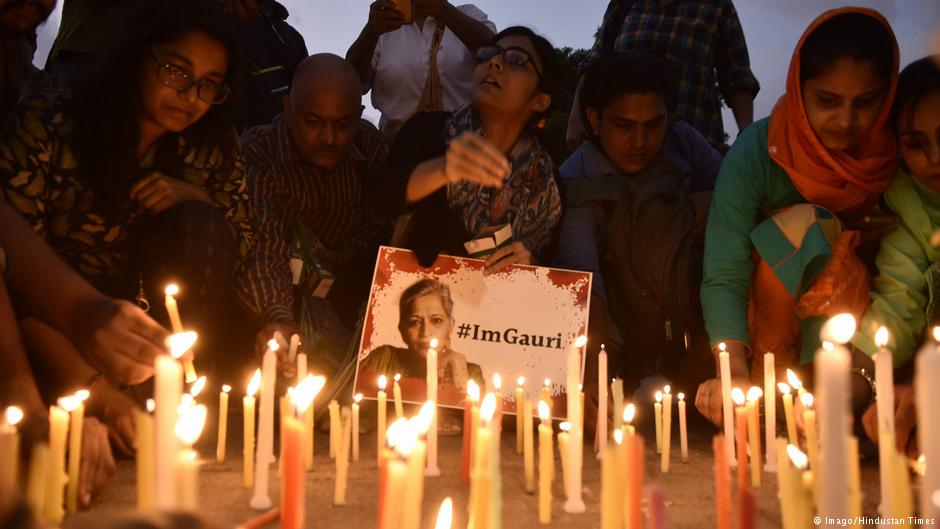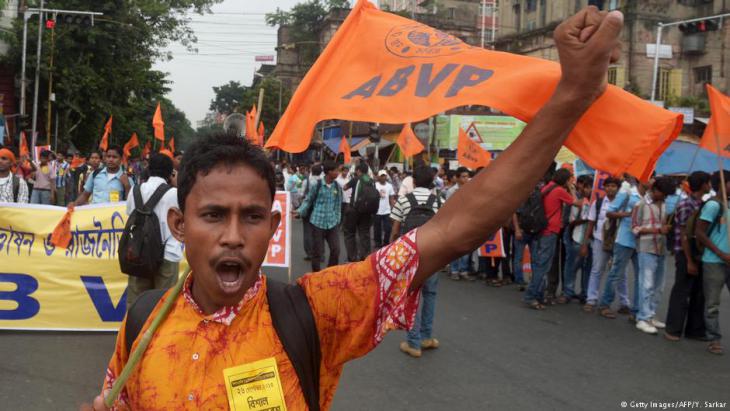An army of Hindutva trolls

In April, Indiaʹs Ministry of Information and Broadcasting introduced a new rule according to which it would suspend the accreditation of journalists who spread "fake news". Within 15 days, regulatory bodies would decide whether the journalist concerned was guilty or not.
The ministry had to retract the new scheme the next day. Public opposition proved too strong. Apparently, Prime Minister Narendra Modi himself intervened.
The big question remains whether the plan was meant to put a check on disinformation or to prevent journalists from reporting news the government is uncomfortable with. Many people saw the scheme as an attempt to curb press freedom before the general elections next year.
Disinformation has become a serious issue in India. Many mainstream-media platforms are guilty of spreading fake news occasionally, but most damage is done on social media. Sometimes news items are faulty by mistake, but the worst ones are created intentionally. An army of paid trolls is spawning a vicious ecosystem of disinformation which consists of lies and tricks and serves political objectives.
Right-wing networks
Since Prime Minister Narendra Modi rose to power in 2014 after his party, the BJP, won the general elections, a host of new right-wing websites has appeared. Examples include OpIndia.com, Postcard News or Swarajyamag.com. They selectively pick up news items, twist them to suit their ideology and freely invent stories.
The BJP is a political party that keeps Hindu supremacy at the centre of their politics. It belongs to a network of organisations which promise to restore greatness to Hindus. This message is divisive because it marginalises minorities, in particular Indiaʹs more than 180 million Muslims who make up almost 15 % of the population. The BJP ideology is called "Hindutva" and Modi is one of its more aggressive proponents.
When Modi was chief minister of Gujarat, more than 1,000 people were killed in riots in 2002. Most victims were Muslims; most perpetrators belonged to Hindu mobs. The state government did not contain the violence, thus failing in its constitutional duty.

To understand the viciousness of disinformation in India, one must know how the Internet trolls operate, who funds them and how they influence the social climate. In her book "I am a troll", Swati Chaturvedi describes how the BJP paid Internet activists to attack political opponents and celebrities perceived as opponents during the election campaign. She alleges that trolls worked on creating a favourable climate for Modi. Even Bollywood superstar Aamir Khan found himself a target.
It has become obvious that this was not just a campaign strategy. The trolls continue to abuse opponents, incite supporters to violence and threaten people with rape and death. They want to suppress dissent and turn India into a Hindu state.
Bizarre historical claims
Not all people among whom the Hindutva ideology resonates are affiliated to the BJP or one of its allied organisations. However, their message is basically the same. Their world view is not based on historical facts, but on self-serving myths. Moreover, it ridicules all other faiths, in particular Islam and Christianity.
Hindutva adherents praise the "superiority" of Hindu culture and demand supremacy for the Hindu religion, which preaches upper caste dominance over all other people. Hindutva proponents make bizarre statements about long-ago history, claiming, for example, that modern science and technology were already known to Hindus thousands of years ago.
In Mumbai in October 2014, Prime Minister Narendra Modi himself publicly claimed that ancient Indians understood genetics and performed plastic surgery. His proof: Ganesh, a Hindu god, has an elephant head. He made his statement, which can be found on YouTube, in Hindi.
Irrespective of what the history books say, the Hindutva foot soldiers argue that India was exploited by invaders for centuries. The only way they know to repair their sense of inferiority is to humiliate Muslims, Christian and other minorities.

Of course, they equally harass any Hindus who support the minorities – be they liberals, leftists or communists. As is typical of populist movements which claim to speak for "the nation", but actually pit communities against communities, Hindutva activists need "others" as permanent enemies.
Hindu supremacists foster hate online and in real life. Incidents of violence have been organised on social media. Moreover, Hindu supremacists have begun to spread news about their hate crimes on Twitter and Facebook to attract additional supporters.
Resentment and aggression directed towards Muslims
The aggressive agitation has not eased, now that the BJP is in power. As the Modi government is apparently unable to implement policies that might lead to the kind of greatness it promised in its campaign, it keeps fuelling resentment. After four years in office, the government is still projecting the image of a country in which the Hindu majority is suffering while the Muslim minority is supposedly "pampered". In truth, it is mostly poor, marginalised and more than ever exposed to violent attacks. The governmentʹs agenda is not one of solving problems, but one of stoking tensions.
Not so long ago, Indian media used to pride itself on being free and vibrant. Today, a large section of the press is either bowing down to political pressure or has become complacent. This makes it easier for BJP-affiliated organisations and their trolls to hound the remaining few who still question the government and uphold the democratic principles of objective, fact-based journalism.
In September, Gauri Lankesh was murdered in Bangalore. She was an out-spoken journalist with a long track-record of opposing Hindu supremacism. Many more journalists are being bullied, harassed and silenced – online and in the real world. I have suffered troll abuse myself.
Ahead of the next general elections, the online and offline intimidation of journalists is set to intensify. The governmentʹs recent attempt to curb the freedom of press was an opportunity to stand up. This time, we managed to defend the principles of independent journalism. A battle has been won, but the war is not over.
Arfa Khanum Sherwani
© D+C | Development and Cooperation 2018
Arfa Khanum Sherwani is an Indian TV journalist affiliated to the quality-news website TheWire. In 2017, she spent three months in Germany, invited by the Robert Bosch Foundation in the context of its fellowship programme Media Ambassadors India-Germany.
